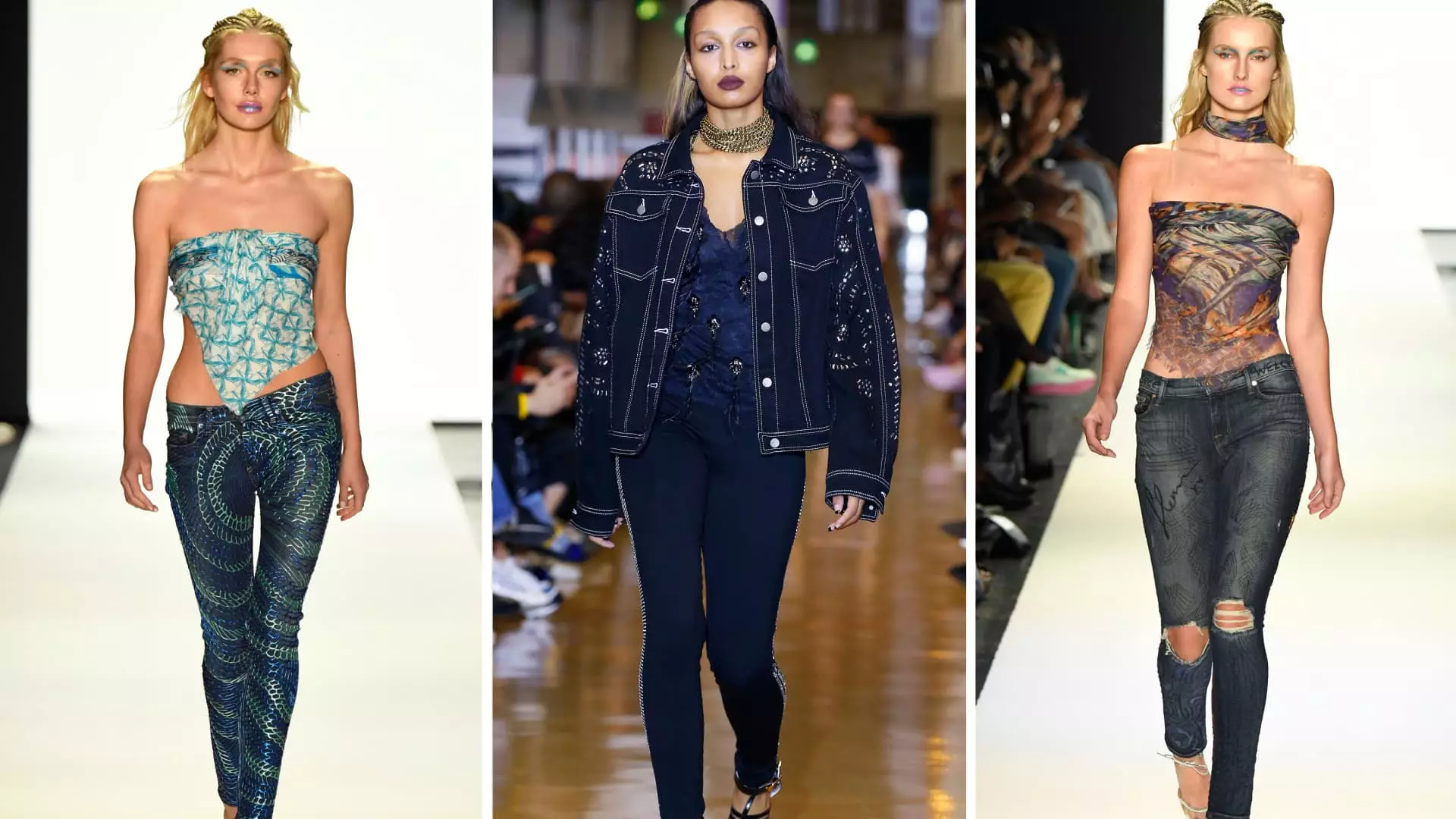Fashion is a cyclical phenomenon, with trends rising and falling in accordance with cultural perceptions and societal standards. Among the most polarizing items in recent history are skinny jeans. Once ubiquitous in the wardrobes of many millennials and the epitome of 2000s fashion, this form-fitting clothing item fell out of favor as a more relaxed silhouette gained traction, ushering in a new era defined by comfort and freedom. However, indications suggest that the skinny jean is re-emerging from its dormant stage, prompting discussions among fashion pundits and consumers alike about its new place in contemporary wardrobes.
Recent reports indicate a marked increase in interest surrounding skinny jeans, notably catalyzed by social media influencers and the omnipresent TikTok platform. The recent launch of exclusive skinny jeans by influencer Alix Earle in collaboration with the denim brand Frame has coincided with a significant uptick in search trends. As retail analysts note, Google Trends for skinny jeans surged, with year-over-year searches escalating by 50% shortly after Earle’s announcement. This data underscores the foundational role that digital platforms now hold in shaping fashion narratives and consumer demand.
Brands are taking heed of this renewed enthusiasm for skinny jeans. Retailers such as Reformation and American Eagle report increased consumer queries and engagement regarding this garment style. Jen Foyle from American Eagle has articulated plans to adapt to this potential resurgence, highlighting how trends ebb and flow, and underscoring the necessity for retailers to remain agile as they navigate the fluctuating fashion landscape. It’s a balancing act between traditional popularity and innovative adaptation.
However, skinny jeans are not merely a reflection of consumer interest; they are also wedged within a broader fashion context. Designers on pivotal fashion runways are reinterpreting the classic slim-fitting jeans—now referred to as skinny pants—by including variations in patterns and fabric types. This reinvention ensures that while they may retain their slender profile, these new iterations distance themselves from the unyielding rigidity of the past. Here, designers have demonstrated a willingness to embrace the contemporary consumer’s aversion to overly restrictive clothing by introducing tailored patterns that promise comfort alongside style.
Fashion scholars posit that the return of skinny jeans might signify more than just a wardrobe update—it can illustrate a collective yearning for familiarity amid the unpredictability characterizing the contemporary world. As noted by Shawn Grain Carter from the Fashion Institute of Technology, contemporary skinny jeans are gradually moving away from jeggings, which tend to cling too tightly. This shift toward a more forgiving fit hints at a broader cultural pivot toward comfort without a sacrifice in style.
The denouncement of skinny jeans as a relic of an outdated aesthetic has left some consumers questioning their own fashion staples. For those who have recently adorned their closets with looser, more relaxed fits, the return of skinnies might seem perplexing. Yet, it is important to recognize that fashion doesn’t operate in absolutes; rather, it embraces a diversity of styles that cater to individuals’ mood, context, and personal preference.
The potential resurgence of skinny jeans could invoke significant shifts within the fashion industry. Historically, shifts in popular clothing styles engender not just alterations in consumer choices, but also an entire ecosystem of retail dynamics. Stichter points out that new silhouettes can prompt refreshment across various segments of the clothing market, including accessories and footwear. As shoppers re-evaluate their jean choices, they may find themselves purchasing complementary items, leading to a cycle of consumer spending that can invigorate sales.
Yet, the journey of skinny jeans back into fashion consciousness is to remain nuanced. Will they re-establish themselves as versatile staples in a multifaceted wardrobe? The consensus among fashion experts suggests that there is indeed room for a blending of styles. The modern denim closet should reflect an array of denim fits, supporting the idea that what one chooses to wear is highly individualistic—deeply tied to personal expression rather than dictated by the whims of mainstream trends.
The potential comeback of skinny jeans could redefine the conversation surrounding fashion inclusivity. Amid the clamor of fast-changing trends, the ability of consumers to meld diverse styles in their wardrobes speaks to a growing acceptance and understanding of personal fashion choice. It is a reminder that in the realm of style, the plurality of options—even those once deemed outmoded—should not only coexist but thrive. This resurgence could signal a fashion future that embraces eclecticism, allowing past favorites and current sensations to inform a new wave of personal expression.

